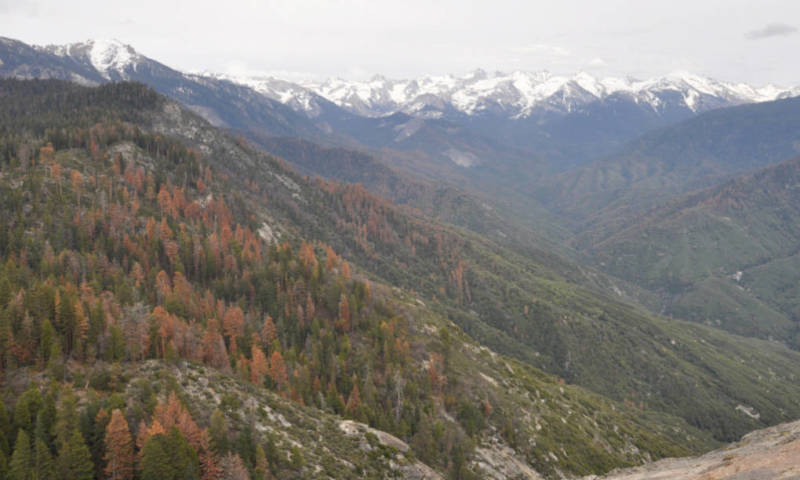Bark beetles gained “a real big advantage” over weakened trees when the drought began nine years ago, according to Moore. “The bugs were beginning to eat at a higher level than they normally would, because with a change in climate, it’s warmer at a higher elevation,” he says.
Even as precipitation remained below average, pulling out of drought has allowed forests to regain some leverage against hungry beetles. “When there’s moisture in the ground, the trees can make enough sap to squeeze the bugs out,” Moore says. “The trees are better able to defend itself against these kinds of bugs.”
In a statement, Cal Fire director Thom Porter called 2018’s slower rate of mortality for trees “encouraging.” But, he added, continuing deaths “are an indication that the forests of California are still under significant stress.”
The worst-hit forests are found along the west side of the central and southern Sierra Nevada range, though surveys show dead and dying trees across the state, especially at higher elevations.
Trees in poor health amplify fire risks, a concern after the deadliest wildfires in California’s history. Even where fire is scarce, sickened trees can fall across roads and power lines unexpectedly.
Established last May, a Forest Management Task Force comprised of more than two dozen federal, state, and local agencies has cleared trees and other forest debris along roads, near power lines, and around 165 communities in the wildland-urban interface, according to Moore. In the longer term, he says government land managers have committed to management strategies that thin forests, including by using prescribed burns across the landscape.
“Between the federal government and the state, we’ve decided that we need to treat a million acres in California a year, that’s what we’re working toward,” says Moore.
Reducing biomass and fire fuels in a forest is complex and expensive work, much of it funded by the State of California. In his first budget, Governor Gavin Newsom proposed spending $305 million on forest management, including $200 million from a 5-year, $1 billion program approved by lawmakers to support fire prevention efforts.

